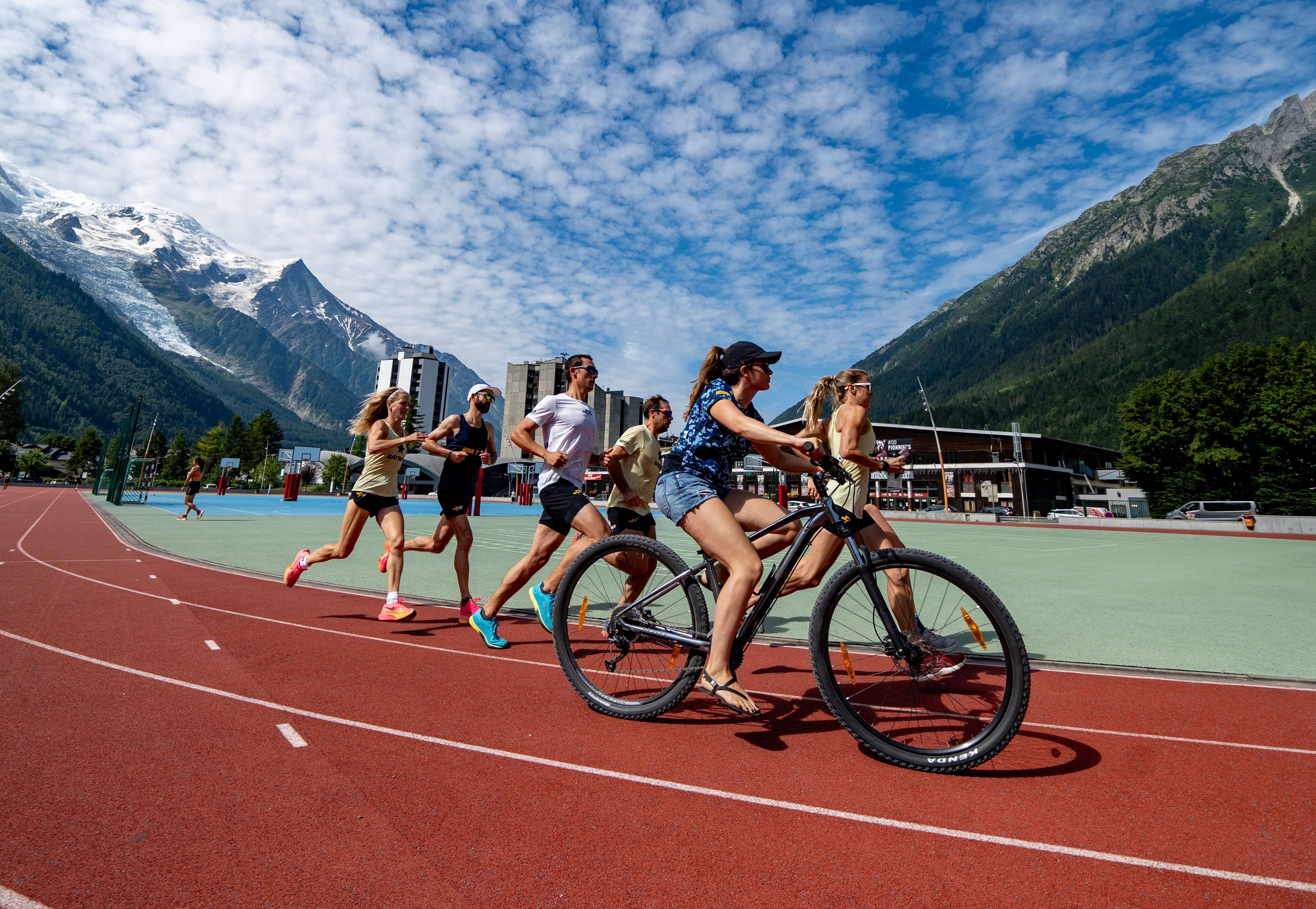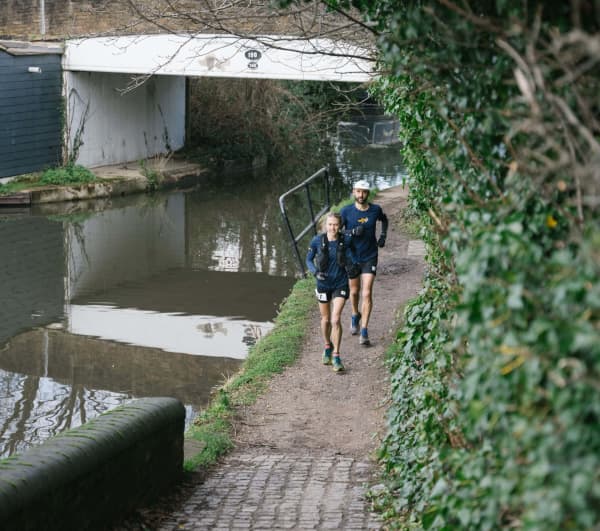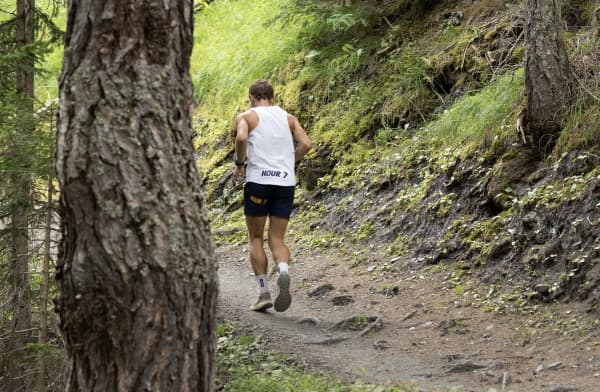Hour 7 Strength and Conditioning Coach Jermaine Olasan works with GB international sprinters and ultra runners. Here he talks about the similarities and differences in training someone to run for 100 metres or 100 miles.
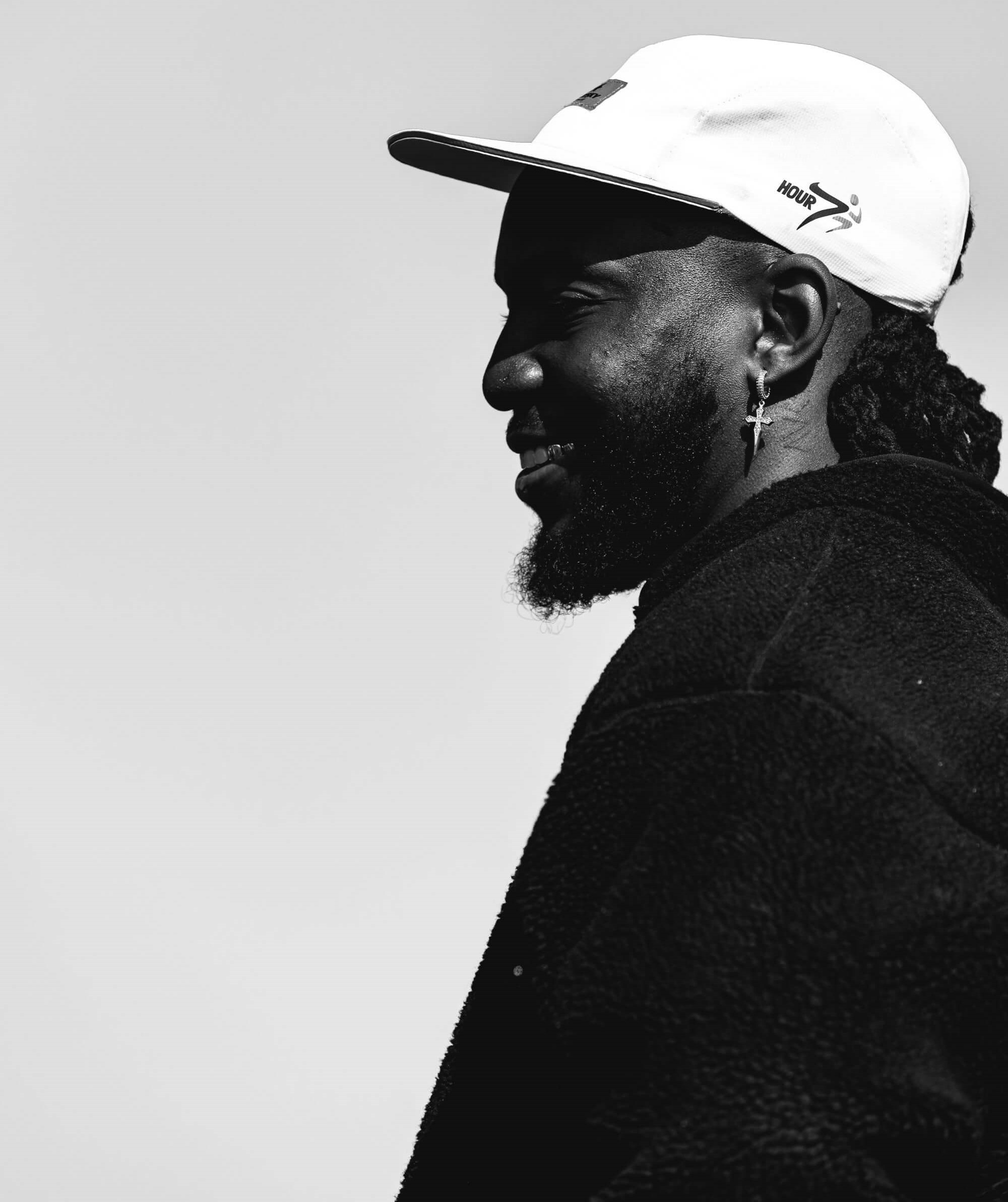 (Hour 7 strength and conditioning coach Jermaine Olasan, at an Hour 7 camp in the North Downs. Photo: Geoff Lowe)
(Hour 7 strength and conditioning coach Jermaine Olasan, at an Hour 7 camp in the North Downs. Photo: Geoff Lowe)
Whether it’s to run for 10 seconds, or it’s to run for 48 hours, the aim is to do so as efficiently as possible. How much force is applied to each ground contact, how long each step stays on the ground, how far each step projects, may all differ, but the premise remains the same. The aim is to get from A to B as quickly and as economically as possible.
The main purpose of my role as an S&C coach is to provide a physical platform for athletes to express themselves. To improve the athletic properties and abilities from which the athletes can perform in their sport. The mantra I live by is to ‘do no harm’. This means that within reason, whatever I prescribe for my athletes must not interfere with their ability to train or compete.
From this, it stands to reason that part of my job is to enhance the athlete’s ability to train. Whether that’s through building work capacity or improving robustness and resilience to injury, my job is to ensure they can train at as high an intensity as is required as frequently as is needed.
This is the case for both sprinters and ultra-endurance runners. They need to be able to train, and train often. The similarities don’t stop there however. They both do an activity which is predominantly uni lateral (on one leg). They both do an activity which is predominantly in the sagittal plane (in a straight direction). They both need to move themselves through space. These might seem like basic things to highlight, but they are key to understanding why there is such crossover in preparing athletes at seemingly opposite ends of the spectrum.
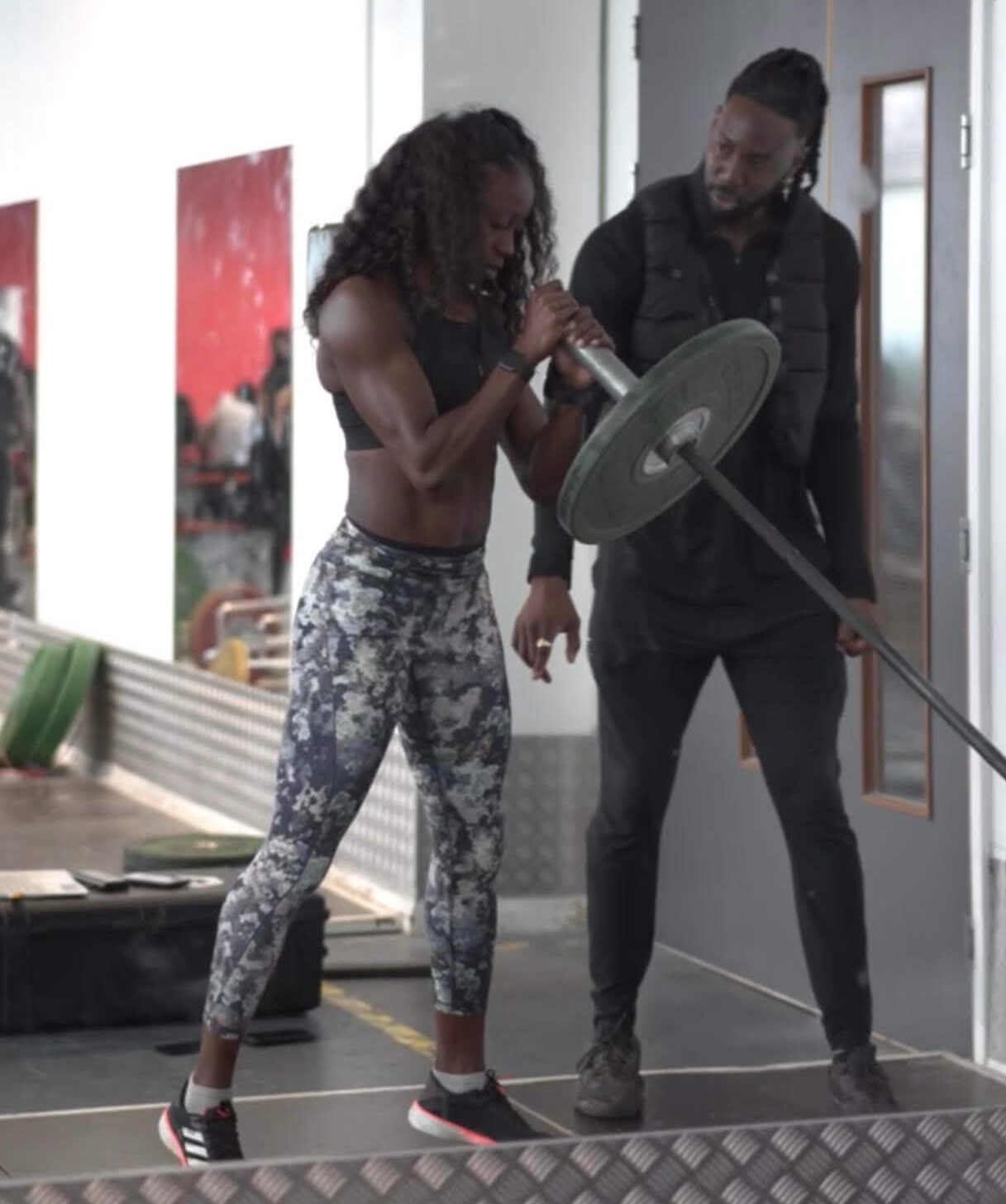 (Hour 7 S&C Coach Jermaine Olasan working with Desirèe Henry).
(Hour 7 S&C Coach Jermaine Olasan working with Desirèe Henry).
In moving through space, on one leg and in a straight line, force needs to be generated and absorbed through the structures of the limbs and torso. Obliques, Glutes, Hamstrings, Quads, Calves and Feet all play an integral role in forward projection. Therefore, training these areas both individually and collectively is the focus, regardless of the distance or duration of the event. So the areas of focus in developing the physical properties of athletes who sit on opposite ends of the ‘speed / endurance continuum’ are extremely similar.
Where the difference lies, is in the intensity of their lifting and the exercise selection. Endurance athletes do not need to produce or absorb as much force as their more fleet footed counterparts. To run for 6, 12, 24, 48 hours does not require a great deal of speed (comparatively). Therefore the amount of displacement and projection required is (comparatively) small. So from this perspective, big compound movements, like a Trap Bar Deadlift, that are good for improving Rate of force Development (RFD) of an athlete's force output are not the primary focus for endurance runners. Instead, their strength training should emphasize muscular endurance, stability, and injury prevention.
For ultra-endurance runners, exercises like bodyweight squats, lunges, step-ups, and stability exercises with resistance bands can be more beneficial. These movements help build muscular endurance and stability, which are crucial for sustaining a steady pace over extended periods. Additionally, core strength exercises and yoga can enhance posture, balance, and overall body control during long-distance running.
On the other hand, sprinters require explosive power and quick force generation to achieve maximum speed in a short amount of time. Therefore, their strength training focuses on exercises that improve their ability to produce force rapidly. Olympic lifts, plyometrics, and resistance sprints are integral parts of their training regimen, helping enhance their rate of force development (RFD) and overall power output.
Despite the differences in exercise selection, both sprinters and endurance runners benefit from injury prevention exercises. Ensuring proper mobility, flexibility, and strength in vulnerable areas like the hips, knees, and ankles can minimize the risk of overuse injuries and promote longevity in their respective careers.
In conclusion, while sprinters and endurance runners have distinct training requirements to excel in their chosen disciplines, they share some fundamental principles in strength training. Both need to optimize force generation and absorption while moving through space unilaterally in a straight line. The key lies in tailoring the training approach to meet the specific demands of each sport, focusing on explosive power for sprinters and muscular endurance for endurance runners, all while promoting injury prevention for both. By recognizing the commonalities and differences between the two training approaches, coaches and athletes can maximize their performance potential and achieve their goals on the track, mountains, or road. Remember, whether it's fast or long, the essence of running remains the same: to cover the distance as efficiently as possible.
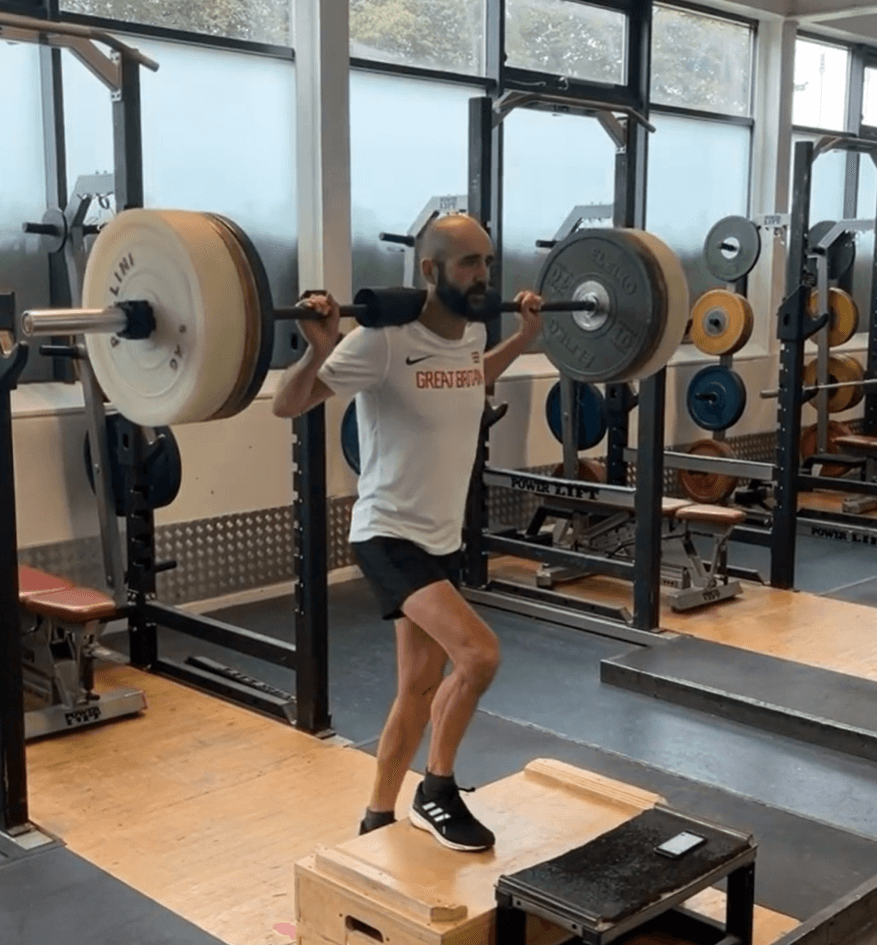 (Hour 7 Founder Michael Stocks in the gym with Jermaine in the build up to his V50 world record 100 mile performance)
(Hour 7 Founder Michael Stocks in the gym with Jermaine in the build up to his V50 world record 100 mile performance)
